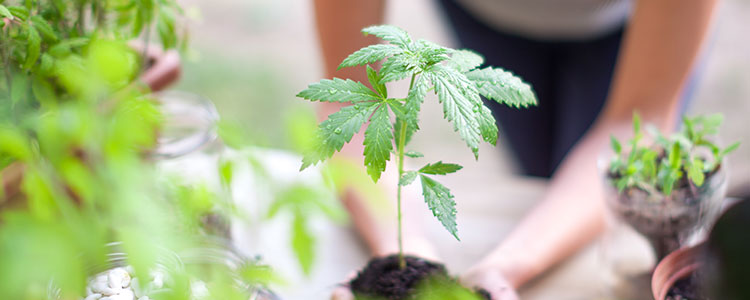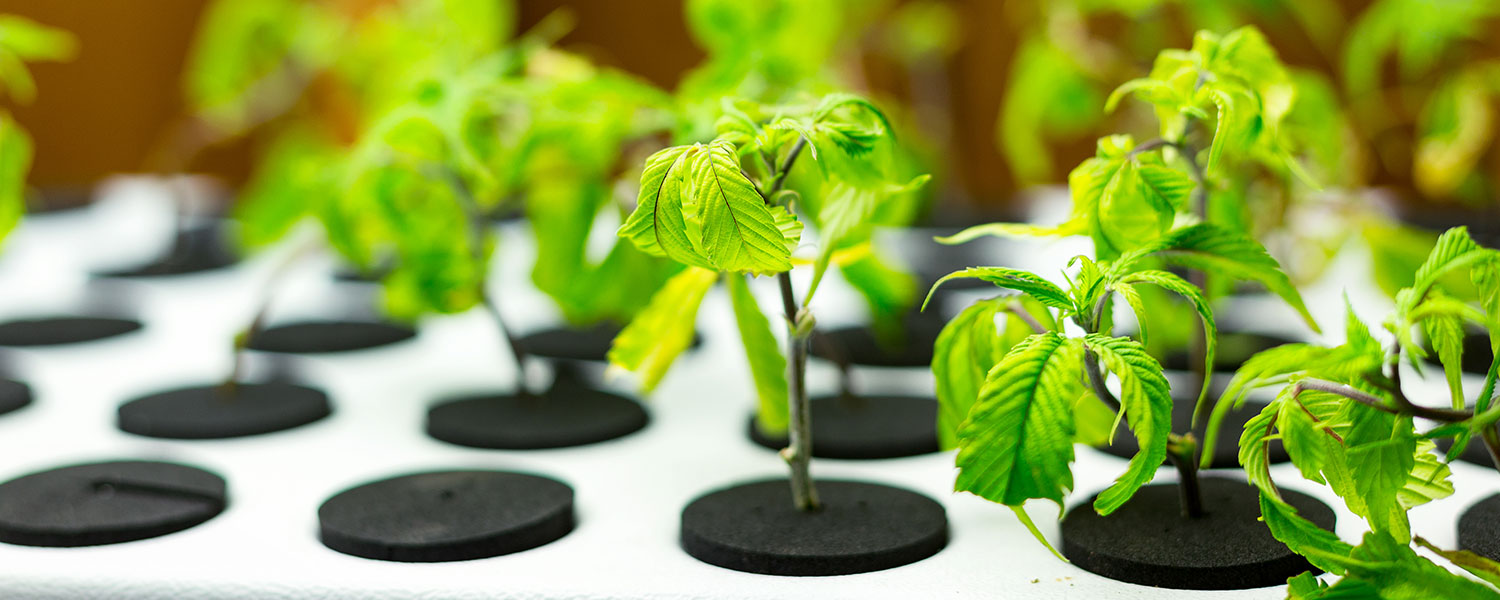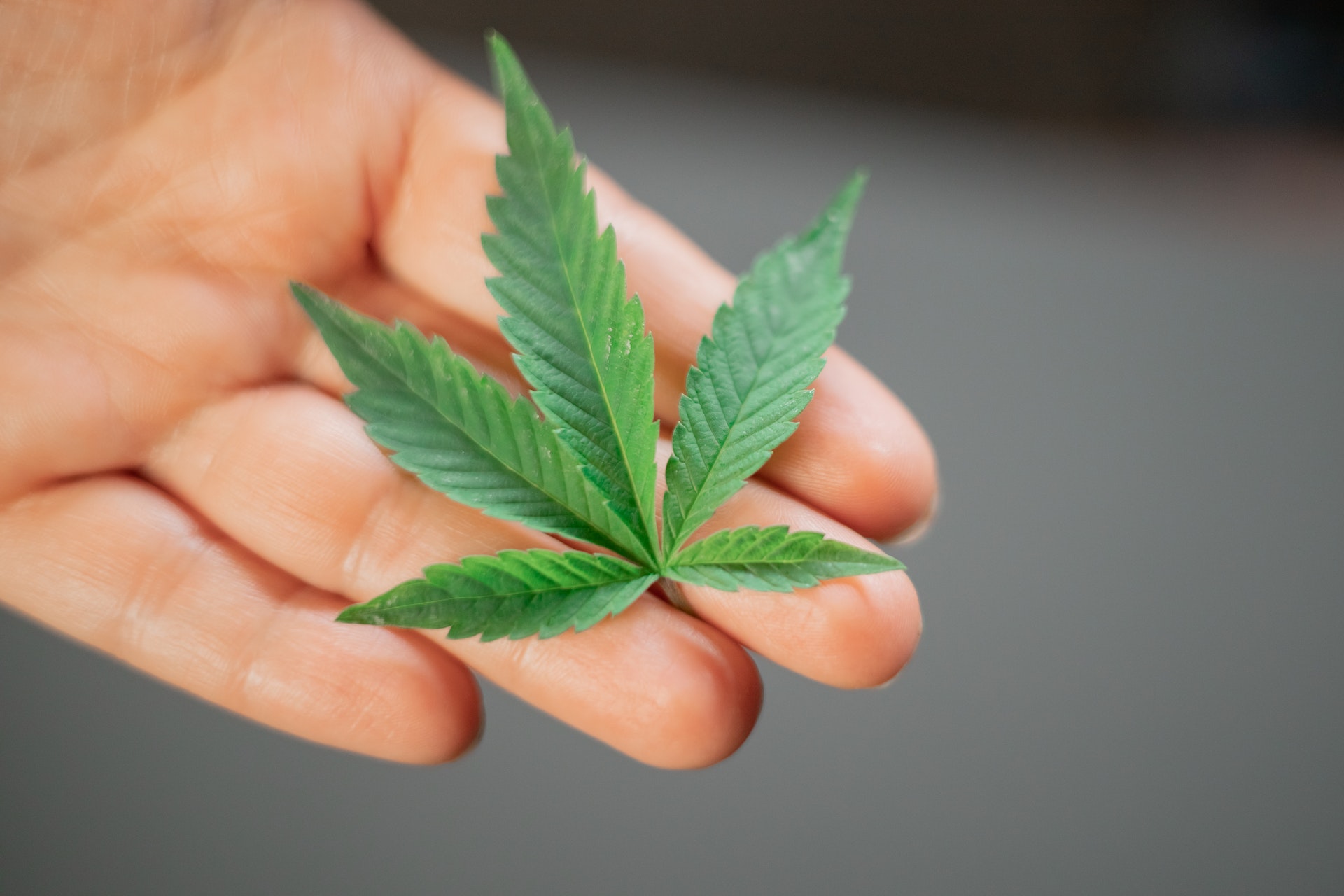In This Article
- How Long Does It Take to Grow Weed?
- Indoor Growing
- Outdoor Growing
- Micro Growing Setup
- Light Dep Setup
- Hydroponic Setup
- Growing with PGRs
- How Do I Make the Growing Process Faster?
- Faster Indoor Growing
- Faster Outdoor Growing
- Faster Seed to Harvest with a Light Dep Setup
- Faster Growth with Hydroponics
- Faster Growth Using PGRs
- When Is Your Home Grow Ready for Harvest?
- Is a DIY Home Grow Right for You?
- What is the fastest method for growing weed?
- Are PGRs safe?
- Do longer photoperiods help weed grow faster?
- What time of year should I grow weed for the fastest harvest?
- How hard is it to grow weed?
- Is it worth it to grow marijuana at home?
The growing social acceptance of cannabis has led to more home growers. With more and more people growing their own cannabis, it’s no surprise that many are looking for ways to expedite the process.
Despite the benefits, growing cannabis can be a time-consuming and complex project that requires careful attention to light, water, nutrients, and other environmental factors.
There’s a lot to consider when cultivating cannabis, like the differences between an indoor and outdoor grow or the potential advantages of hydroponics and light deprivation systems. There are also clever ways to accelerate the cannabis growing process using environmental factors and the plant’s own lifecycle.
Whether you’re a seasoned grower or a first-timer, there’s always something to learn to help you get the most out of your home-grown cannabis.
How Long Does It Take to Grow Weed?
The necessary time to grow cannabis can differ depending on several factors, including the growing method, whether it’s grown indoors or outdoors, and the strain used.
It’s important to learn the average growth time for marijuana using different cultivation methods and setups, including indoor growing, outdoor growing, micro growing, light deprivation growing, hydroponic growing, and growing with plant growth regulators (PGRs).
Indoor Growing
Indoor growing is a popular method for growing cannabis because it allows for the control of the environment and factors such as temperature, light, and humidity. This controlled environment allows for a more consistent growth cycle and a faster harvest than outdoor cultivation.
From seed to harvest, the average growth time for indoor cannabis plants is around 3-5 months. This can vary depending on the strain or the grow room setup. But, generally speaking, indoor weed plants grow faster and have a shorter flowering period than outdoor plants.
Outdoor Growing
Outdoor growing is a more natural approach to growing cannabis, as the plants are exposed to natural elements, such as sunlight and precipitation. This method can produce larger plants and yields compared to indoor growing. However, it also has challenges, like unpredictable weather patterns and the risk of pests and diseases.
From seed to harvest, the average growth time for outdoor cannabis plants is around 5-6 months. This can vary depending on the climate, location, and strain used. However, outdoor weed plants typically grow more slowly and have a longer flowering period than indoor plants.
Micro Growing Setup
Microgrowing is a compact and efficient method of growing cannabis in a small space, typically a grow tent or cabinet. This method is ideal for growers with limited space or who want to cultivate fewer plants.
From seed to harvest, the average growth time for a microgrow is around 8-12 weeks. This can vary depending on the strain and the setup of the grow space. However, microgrow plants tend to have a faster growth cycle than outdoor plants and a shorter flowering period than indoor plants.
Light Dep Setup
Light dep growing is a method of growing cannabis that involves manipulating the amount of light the plants receive to induce flowering much faster than they otherwise would. Outdoor growers who want to extend the growing season often use this method to produce multiple harvests in one season.
From seed to harvest, the average growth time for light-dep cannabis plants is around 3-5 months. This can vary depending on the strain and the setup of the light dep system, but if done properly, light deprivation techniques will induce a faster growth cycle and earlier flowering stage.
Hydroponic Setup
Hydroponic growing is a method of growing plants using no soil in a nutrient-rich water solution. This method allows for a faster growth cycle and higher yields compared to traditional soil-based growing.
From seed to harvest, the average growth time for hydroponic cannabis plants is around 2-4 months. This can vary depending on the strain and the setup of the hydroponic system. However, hydroponic cannabis plants have a faster growth cycle than outdoor and indoor plants and a shorter flowering period than soil-based plants.
Growing with PGRs
Growing cannabis with plant growth regulators (PGRs) involves using chemicals that alter natural plant growth and development. This method can increase yields and shorten the growth cycle, but many cultivators and consumers have concerns about the quality of buds grown using PGRs.From seed to harvest, the average growth time for weed plants grown with PGRs is around 2-3 months, similar to hydroponic growing. The exact growth time will depend on the PGRs, strain, and growing method. It’s important to note that using PGRs can also have potential side effects, such as stunted growth or reduced yields. Therefore, they should only be used by experienced growers who understand the correct usage and dosages.
How Do I Make the Growing Process Faster?

There are several tips and tricks to hasten the growth process and shorten the time to harvest, no matter which growing method or setup you choose. Here are some general tips for speeding up the growth of your weed plants:
- Choose strains with shorter flowering times - Some strains (like Banana Kush, Royal Cheese, or Quick One) have naturally shorter flowering periods, so choose these if you want to grow and harvest your plants as fast as possible.
- Maintain the growing environment—Understanding how to adjust factors such as light, water, and nutrients can help optimize growth and reduce the time to harvest.
- Start with clones instead of seeds - Clones are cannabis plants derived from another grown marijuana plant (called the “mother”). Because of this, clones are weed plants that have already started the vegetative stage. So, beginning your cannabis crop using a clone can bypass any need to germinate seeds and get you to harvest faster.
- Use proper pruning techniques - Pruning can help maintain a healthy growth pattern and reduce the overall time to harvest.
Besides these general tips, here are specific recommendations for each growing setup to help speed up your cannabis growth.
Faster Indoor Growing
- Use high-intensity grow lights—High-intensity grow lights can help speed up growth and reduce flowering time when growing cannabis indoors.
- Control temperature and humidity—Maintaining optimal temperature and humidity levels for growth in your cultivation space can help speed up the process and improve overall yields.
Faster Outdoor Growing
- Choose the right location—Growing in an area with consistent sunlight and temperature can help optimize plant growth and reduce the time to harvest.
- Use proper soil and nutrients—Providing the right soil and nutrients can help speed up the growth process and improve overall yields.
Faster Seed to Harvest with a Light Dep Setup
- Properly manage the light-dep schedule—Ensuring that the light-dep schedule is appropriate for the strain and growth stage can help reduce the flowering time and speed up the overall process.
Faster Growth with Hydroponics
- Use a high-quality nutrient solution—Providing the proper nutrients in the water solution can help speed up the growth process and improve overall yields.
- Control temperature and pH levels—Keeping temperature and pH levels optimal for growth can help speed up the process and improve the overall yield.
- Monitor and adjust the nutrient solution regularly—Consistently monitoring and adjusting the nutrient solution of your hydroponic system can help maintain optimal growth conditions and reduce the time to harvest.
Faster Growth Using PGRs
- Choose the right PGRs—Research and select the right PGRs for the strain and stage of growth to get the best results and reduce the time to harvest.
- Follow proper usage instructions - Follow the correct usage instructions and dosages to avoid adverse effects on growth and yield.
Regularly monitor plant health—Consistent monitoring of the plants can help ensure that the PGRs are not producing any adverse effects and that your plants are growing optimally.
When Is Your Home Grow Ready for Harvest?

Determining when your home grow is ready for harvest can be challenging. The time it takes to grow cannabis can vary depending on the strain, cultivation method, growing environment, and other factors.
No matter what grow method you choose, specific signs will show when your plants are ready for harvest.
One of the most significant factors that impact harvest time is the strain. Different strains have varied flowering times, with some taking as little as six weeks and others taking up to 14 weeks or more. Thus, determining the average flowering time for your chosen strain is the first step in determining when your plants are ready for harvest.
Another factor that will affect how long it takes to grow marijuana at home is your chosen cultivation method. Indoor and outdoor growing methods, along with your setup (whether that’s soil, hydroponics, or light dep), can all impact your plants' growth and flowering time. Understanding the specifics of your chosen cultivation method can help determine when your plants will be ready for harvest.
Besides these factors, variables like the growing environment, light exposure, and nutrition can all impact the timing of the harvest. It is essential to closely monitor your plants and understand the signs that they are ready for harvest to ensure you get the best possible results.
So, what are the signs that your plants are ready for harvest? Here are some of the most common indicators:
- Pistil maturity—The pistils, or hair-like structures, on your buds, will change color from white to red, orange, or brown as they mature. When 50-70% of the pistils have changed color, your plants are likely ready for harvest.
- Trichome visibility—Trichomes are the resin-secreting glands on your buds that contain the cannabinoids and terpenes that give your buds their potency and flavor. As the trichomes mature, they will change from clear to cloudy and eventually amber. Your plants are likely ready for harvest after the trichomes are predominantly cloudy or milky white.
- Leaf yellowing—As your plants mature and flower, the fan leaves will begin to yellow and wilt. When most of these fan leaves have yellowed, your plants are likely ready for harvest.
By monitoring these indicators and using visual inspection and magnification tools, you can determine when your home grow is ready for harvest. The key is to be patient and not harvest too soon, which can negatively impact your crop's potency, flavor, and overall yield.
Is a DIY Home Grow Right for You?
Growing cannabis at home can be a rewarding and fulfilling experience, but it is not for everyone. Before you start your own DIY home grow, there are a few things to consider.
First, it’s crucial to understand the time and effort required to grow cannabis. From setting up your grow area and equipment to monitoring your plants and adjusting nutrients, light, and water, growing cannabis takes dedication and hard work. If you’re not prepared to put in the time and effort, a DIY home grow may not be the right choice for you.
Next, consider the cost. While growing your own cannabis can save money in the long run, the initial investment in equipment, seeds, and supplies can be substantial. If you’re on a tight budget, it may be more cost-effective in the short term to purchase your cannabis from a dispensary.
Finally, know your local laws and regulations. In many areas, growing cannabis at home is illegal or strictly regulated. Before you start a DIY home grow, take steps to ensure you are operating within the law.
If you’re willing to put in the time and effort, have the resources to invest, and can do so legally, a DIY home grow can be a great way to experience the joys of growing your cannabis (and can ensure you always have access to your favorite cultivars). Just be sure to educate yourself, follow best practices, and always prioritize safety and legality.
What is the fastest method for growing weed?
The fastest method for growing cannabis can vary based on several factors, such as the strain you choose, the growth setup you use, and the environmental conditions you provide.
Some growers have had rapid success with hydroponic systems, which allow precise control over nutrients, water, and light. Others prefer light deprivation setups, which use the natural cycles of light and dark to control the flowering process.
Micro-growing setups can also be fast, but they often produce smaller yields. Ultimately, the quickest method for growing cannabis will depend on your particular goals and resources.
Are PGRs safe?
PGRs, or plant growth regulators, are chemicals that are often used in the cultivation of cannabis to improve plant growth and increase yields. However, whether the use of PGRs and the consumption of the end products are safe is a matter of debate within the cannabis community.
Researchers have shown some PGRs to have adverse health effects, including carcinogenic properties or hormone-mimicking effects, which might harm both the grower and the end consumer. Therefore, it’s essential to use PGRs in moderation and follow the manufacturer’s instructions carefully.
In terms of the safety of consuming cannabis that has been grown with PGRs, there is still much debate and limited scientific research. Some experts believe PGRs may alter the plant’s chemical composition, potentially leading to an increase in THC levels and changes in other cannabinoids and terpenes, which could affect the overall quality and effects of the cannabis.
Do longer photoperiods help weed grow faster?
Intentionally shortening your plants' photoperiods could cause them to begin flowering faster. This technique is called light deprivation, or light depping. While this technique may allow your plants to grow quickly, it may negatively affect their size and overall yield.
Cannabis plants require a specific amount of light and darkness to grow. Providing them with either too much or too little can negatively impact their growth and development. The optimal photoperiod for cannabis growth depends on the specific strain, growing environment, and cultivation techniques (among other factors).
What time of year should I grow weed for the fastest harvest?
Growing an auto-flowering strain will get you to harvest faster than nearly any other cultivation setup. These specific strains can take approximately 2-3 months from seed to harvest.
Generally speaking, outdoor growers should start their plants in the spring to take advantage of the longer days and warmer temperatures during the summer months. Indoor growers can control the photoperiod and temperature to create optimal growing conditions all year. We recommend you research the specific strain you are growing and consult with experienced growers to determine the optimal timing for your harvest.
How hard is it to grow weed?
Growing cannabis can be challenging, especially with little prior experience. It requires some knowledge and experience to cultivate high-quality cannabis plants. You must be familiar with the growing process, including factors like temperature, humidity, light cycles, soil, water, and nutrients. You also need to understand the different strains of cannabis and their unique growing requirements. However, with the right resources, guidance, and practice, you can become skilled at cultivating cannabis.
Is it worth it to grow marijuana at home?
Whether growing cannabis at home is worth it depends on your personal goals and circumstances. If you use cannabis for medicinal or recreational purposes, growing your own plants can be a cost-effective way to get a regular supply of high-quality flowers with your desired effects. It also gives you more control over the growing process so that you can tailor the experience to your particular needs and preferences.
However, growing cannabis can also require a significant upfront investment in equipment, supplies, and time. It’s essential to weigh the pros and cons before deciding if it is worth it. It’s also important to note that the legality of growing cannabis varies by location, and home cultivation may not be an option in some areas.
The information in this article and any included images or charts are for educational purposes only. This information is neither a substitute for, nor does it replace, professional legal advice or medical advice, diagnosis, or treatment. If you have any concerns or questions about laws, regulations, or your health, you should always consult with an attorney, physician or other licensed professional.




